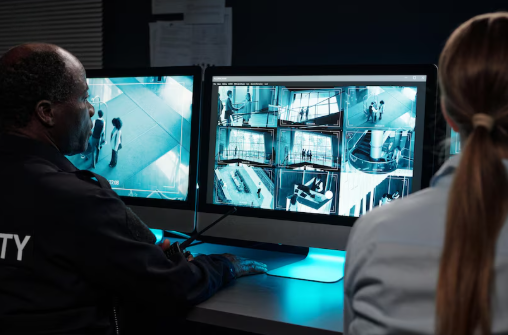
Internal theft is a critical challenge that silently eats into a company’s profits, resources, and trust. While businesses often focus on external threats, it’s the internal risks—committed by employees, contractors, or vendors—that can be the most damaging. To combat this issue effectively, organizations must embrace integrated security systems that consolidate surveillance, access control, cybersecurity, and monitoring into one smart and responsive network. These systems help detect, deter, and respond to theft from within—before it escalates into serious loss.
Why Integrated Security is Crucial for Internal Theft Prevention
Traditional security measures often operate in silos—CCTV, access control, alarm systems, and cybersecurity tools functioning independently. This lack of coordination makes it easier for internal offenders to exploit gaps. Integrated security, however, provides a unified ecosystem where every component communicates in real time, offering complete situational awareness.
For instance, if an employee swipes into the server room outside of approved hours and attempts to download sensitive data, an integrated system can instantly flag the behavior, trigger alerts, and block access before damage occurs. These systems create strong deterrents by linking access with surveillance, logging, and automated responses, thus minimizing the opportunity for misconduct.
Moreover, real-time data allows businesses to proactively monitor behavior, identify suspicious patterns such as repeated failed logins or unauthorized presence in restricted zones, and take corrective actions swiftly. Over time, this creates a culture of accountability, discouraging unethical behavior across all levels of the organization.
Core Components of an Effective Integrated Security System
An integrated security framework combines key technologies that, when unified, become far more powerful than when used independently. The core elements include:
Access Control and Credential Management
Controlling who enters what areas—and when—is a fundamental way to reduce internal theft. Using biometric systems, RFID access cards, or mobile credentials, access can be granted or restricted based on employee roles. For sensitive areas like server rooms or inventory storage, dual-authentication or time-restricted access adds extra security.
Audit logs keep track of every access attempt, successful or failed, providing clear insights into who was where and when. These records are invaluable during internal investigations and ensure full traceability.
Surveillance and Smart Video Analytics
Surveillance systems do more than record; they can now actively monitor and interpret behavior. When connected with AI-based video analytics, CCTV becomes a powerful detection tool—identifying tailgating, loitering, movement in no-access zones, or out-of-hours presence. Smart alerts can be sent in real-time to supervisors or security personnel via mobile apps or centralized dashboards.
The psychological impact of visible surveillance also cannot be underestimated. Employees are far less likely to commit theft when they know every movement is being monitored, recorded, and analyzed intelligently.
Cybersecurity Integration
Internal theft isn’t limited to physical items. Today, data is often more valuable than inventory—and employees may try to copy, share, or delete sensitive information. Integrated security systems link cyber protection tools—such as user activity tracking, firewalls, and endpoint monitoring—with physical access controls.
For example, an employee logging into a secure system from an unauthorized location while simultaneously accessing a restricted area physically can raise automated red flags. Such coordinated defense ensures no suspicious action goes unnoticed, whether in the digital or physical space.
Real-Time Monitoring, Automation, and Alerts
A standout benefit of integrated systems is the ability to respond instantly. If a breach occurs—whether a door is forced, a firewall is triggered, or a suspicious object is detected—the system doesn’t wait for human intervention. It automatically locks down the area, notifies management, and can even contact emergency services if needed.
Such automation reduces response time and improves outcomes. It also means fewer false positives, as systems can cross-reference multiple indicators before escalating. For example, a door alarm might be ignored by a traditional system, but an integrated system will correlate it with surveillance and access data to verify the threat before taking action.
Enhancing Accountability and Culture of Trust
Integrated security is not just a tech investment—it’s a strategic tool for shaping workplace culture. When employees know that all activities are monitored and linked to their credentials, they tend to behave more responsibly. This transparency encourages trust, particularly among honest employees who are reassured that systems are in place to protect their work and the business.
Moreover, automated logs and audit trails provide HR and compliance teams with the documentation needed to enforce company policy or support disciplinary action if necessary. Over time, the presence of such a system acts as a natural deterrent, drastically reducing the temptation or perceived opportunity to steal.
Scalable, Compliant, and Ready for the Future
One of the biggest advantages of integrated security services is that it can scale with your business. Whether you operate a single facility or multiple sites across regions, cloud-based systems can centralize control and provide remote access to all security operations. This flexibility allows organizations to adapt quickly to growth, policy changes, or new threats.
Integrated systems also help meet regulatory compliance in industries like finance, healthcare, and logistics by automating reports, maintaining access records, and ensuring data privacy protocols are followed. This not only keeps businesses legally protected but also builds credibility with partners, investors, and clients.
Conclusion
Internal theft is an evolving threat that demands a modern and unified defense strategy. By investing in integrated security systems, businesses gain real-time visibility, intelligent automation, and a culture of accountability that works together to minimize internal risks. From controlling access to securing data and automating responses, integrated solutions empower companies to stay ahead of theft—not just react to it.
Businesses that take internal security seriously are better equipped to preserve trust, protect assets, and maintain operational integrity in an unpredictable environment.
